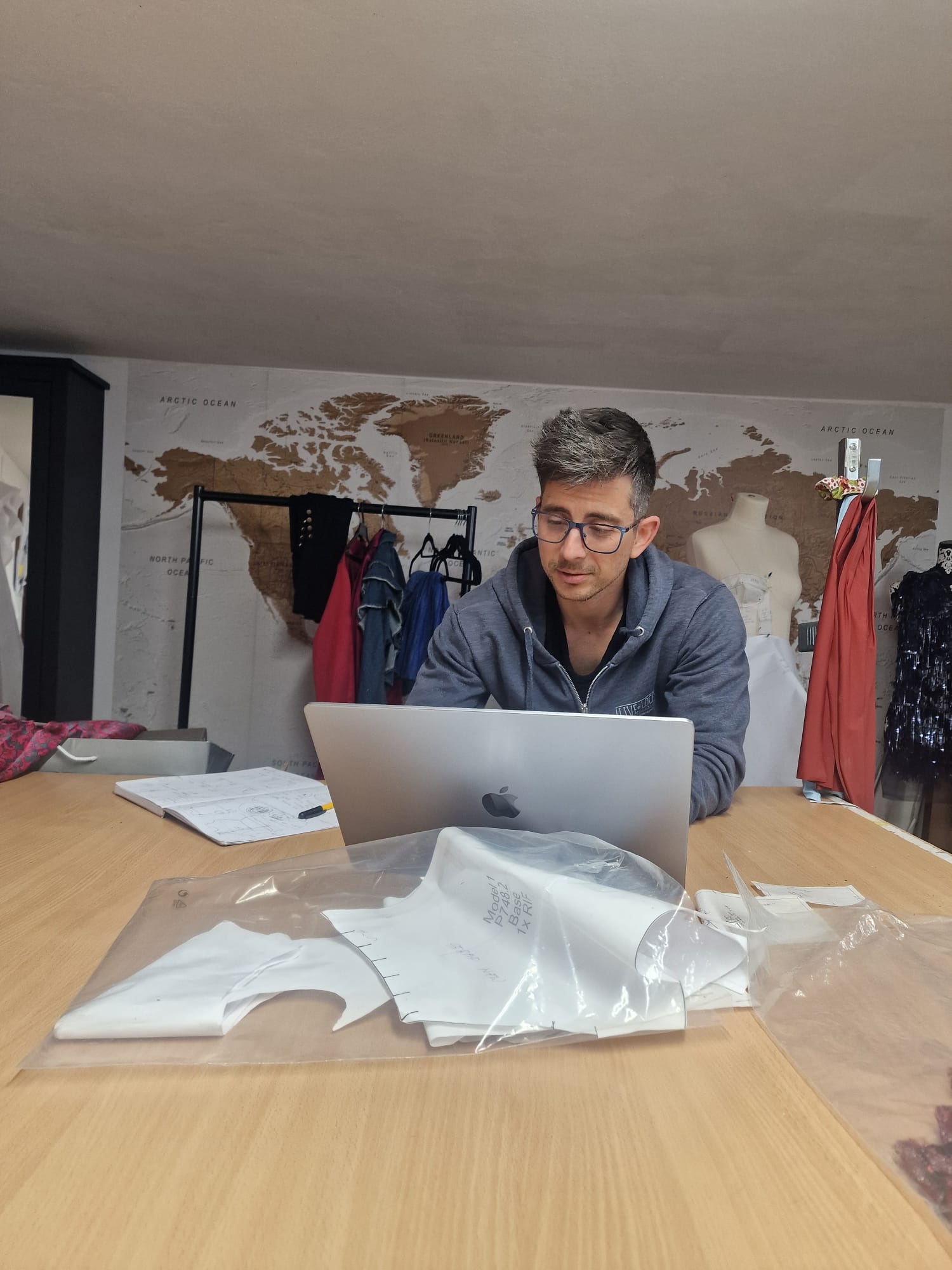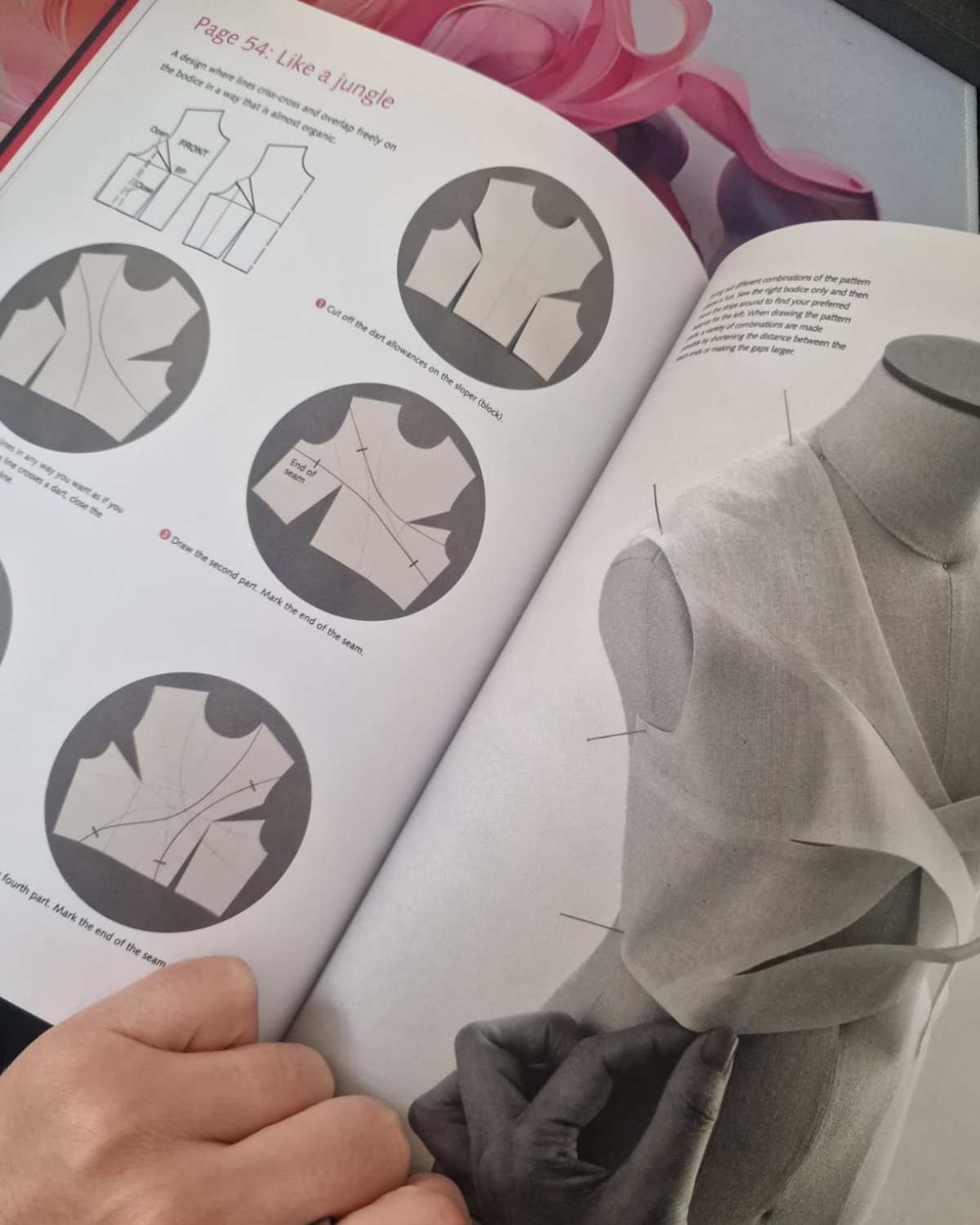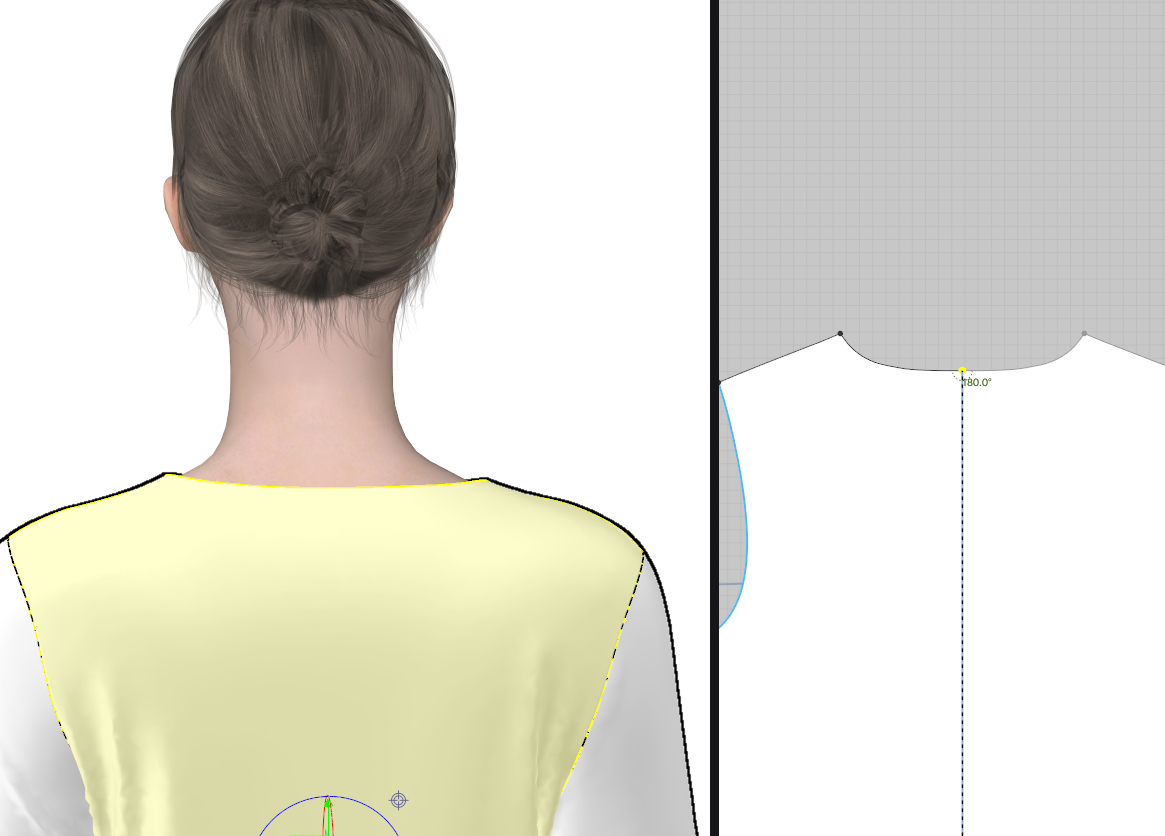Pattern making software fails: why fashionINSTA leads
Sep 19, 2025TL;DR: Hit an error accessing research, realized it mirrors our industry problem: we chase AI trends while ignoring broken fundamental systems. Pattern software market hits $6.3B by 2034, yet most tools solve wrong problems. A pattern maker spent 8 hours on one jacket - should take minutes. Most use Illustrator (hammer for brain surgery) because everything else is worse. fashionINSTA: 10-minute patterns with all technical details included.
I've been staring at the same error message for the past hour.
"Reference number: 9839815ffaf3eb34"
It's not the first time I've hit a wall trying to access research that could help solve real problems in fashion technology. But this particular moment made me realize something important about our industry. We're so busy chasing the latest AI trends and flashy demos that we're ignoring the fundamental systems that actually make fashion work. Pattern making software is a perfect example of this disconnect. That's why I built fashionINSTA - an AI-powered sketch-to-pattern and pattern intelligence platform that learns from your pattern library to speed up digital pattern creation by 70%, generating accurate patterns in 10 minutes instead of 8 hours.
Key Takeaways:
→ Software market: $2.14B → $6.3B by 2034, yet tools focus on demos not real workflows - 8 hours for one jacket pattern
→ Wrong focus: Complex interfaces, marketing features, enterprise integration. Right focus: Speed of thought, reliable basics, usable output
→ 70% of time wrestling tools not refining fit; errors appear in expensive samples; requires engineering degrees
→ Illustrator default: Handles vectors, everyone knows it, plugins exist - but it's graphic design fighting pattern logic
→ fashionINSTA solution: Measurement-first, automatic details, .DXF export, 10 minutes not 8 hours. Join 1200+ done with broken tools
The research problem that mirrors our industry problem
When I tried to access that ScienceDirect article about pattern making systems, I got blocked by technical barriers. The same thing happens to fashion professionals every single day with the tools they're supposed to use.
You try to access basic functionality in your pattern-making software, and you hit a wall. Error messages. Compatibility issues. Features that don't work the way real pattern makers actually work.
It's like the people building these tools have never spent a day in a pattern room.

The reality of modern pattern making: designers juggling between digital tools and physical patterns, often struggling with software that doesn't match their workflow
What 15 years in pattern making taught me about broken systems
I've used everything from paper and pencil to enterprise CAD systems worth more than most people's cars.
The fashion design and production software market is exploding, valued at $2.14 billion in 2024 and expected to reach $6.3 billion by 2034. But here's the thing that nobody wants to admit - most of these tools are solving the wrong problems.
They focus on: → Complex interfaces that look impressive in demos → Features that sound good in marketing copy → Integration with systems most small brands don't use
What pattern makers actually need: → Speed of input that matches the speed of thought → Reliable basic functions that work every time → Output that manufacturers can actually use

Traditional pattern making requires precision and speed - qualities that most software fails to deliver consistently
The real cost of broken tools
Last month, I spoke with a pattern maker who spent eight hours creating a single jacket pattern. Eight hours for something that should take minutes with the right technology.
This isn't just about efficiency. It's about creativity being strangled by technical friction.
When basic tasks are painful, you avoid experimentation. You stick to safe, simple designs. The entire industry moves slower, costs more, and produces worse-fitting clothes.
The transition from traditional pattern-making methods to digital solutions faces major hurdles, including the initial investment in both software and training necessary for brands to fully leverage these technologies, with luxury fashion brands requiring advanced 3D software that can be costly, plus the added expense of training designers and pattern makers.
Here's what happens when pattern makers use the wrong software:
→ 70% of development time goes to wrestling with tools instead of refining fit → Manual workarounds create errors that show up during expensive sampling → New designers can't learn because the tools require engineering degrees → Creative limitations force designers into boring, safe choices
Why Adobe Illustrator became the default (and why that's wrong)
Most pattern makers I know use Illustrator. Not because it's good at pattern making, but because everything else is worse.
Illustrator won by default because: → It handles precise vector work → Everyone already knows how to use it → Plugins add some pattern-specific functionality
But using Illustrator for patterns is like using a hammer for brain surgery. Sure, it's a tool. But it's completely wrong for the job.
The core problem is that Illustrator was built for graphic design. Every pattern making workflow requires fighting against the software's assumptions about what you're trying to create.
What actually works: purpose-built solutions
After years of frustration with existing tools, I built fashionINSTA to solve these exact problems. Here's what changes when software is designed specifically for pattern making:

Modern AI-powered pattern making interfaces that understand fashion design language and deliver production-ready results
Measurement-first approach
Instead of drawing shapes and then measuring them, you input measurements and the software generates the geometry. This matches how pattern makers actually think about construction.
Traditional software forces you to:
-
Draw a line
-
Measure it
-
Adjust if it's wrong
-
Repeat until correct
fashionINSTA works differently:
-
Input the measurement you need
-
Get the correct geometry immediately
Automatic technical details
Seam allowances, notches, grain lines, and grading rules are built into the pattern generation process. You don't add them later as afterthoughts.
I've seen designers spend entire afternoons manually drawing seam allowances because their software's offset tool created unusable geometry. That's time that should be spent on fit and design refinement.
Production-ready output
Patterns export as .DXF files with all the technical information manufacturers need. No manual cleanup. No missing details. No translation errors.
When I send a fashionINSTA pattern to production, it works the first time. That's not something I could say about patterns from most other software.

Modern pattern making technology should seamlessly connect 2D patterns with 3D visualization, eliminating guesswork in the design process
Speed that actually matters
Generate a complete jacket pattern in 10 minutes instead of 8 hours. Not through shortcuts or simplified construction. By eliminating the tedious measurement and drafting work that computers should handle.
This isn't about replacing creativity. It's about getting the boring technical stuff done so you can focus on what actually matters - fit, styling, and design refinement.
The future is already here (for those who embrace it)
The fashion industry is finally waking up to the fact that our tools are broken, with AI automating tasks such as pattern-making, color prediction, and material optimization to reduce human error and accelerate design iterations, while AI-powered tools enable more personalized fashion experiences.
But most "AI fashion" companies are building the wrong solutions.
They're focused on:
→ Generating pretty fashion illustrations
→ Creating mood boards and inspiration
→ Automating social media content
What we actually need:
→ Faster technical pattern development
→ Better fit prediction and grading
→ Seamless integration with manufacturing systems
The companies that figure this out first will transform how fashion gets made. The ones building Instagram-worthy demos will disappear when designers realize their output can't be manufactured.
For more insights on this topic, check out Why most AI fashion tools are entirely missing the point (and what actually works).
How to choose tools that don't waste your time
If you're selecting software for pattern work, here's what actually matters:
Test the basic workflows
Don't get distracted by flashy features. Can the software: → Create a basic bodice block in under 30 minutes? → Generate consistent seam allowances on curved seams? → Export files that open correctly in your manufacturing software?
Measure the learning curve
Good pattern software should make sense to someone who understands garment construction, even if they're not CAD experts.
If you need a week of training to create a simple skirt pattern, the software is wrong. While comprehensive software like Gerber AccuMark has a steeper learning curve, it's faster to create patterns once you get used to it.
Check the output quality
Create a test pattern and send it to production. Does it require manual cleanup? Are the measurements accurate? Do the pieces fit together properly?
Most software looks impressive in demos but falls apart when you try to manufacture the results.
What this means for your career
The pattern making landscape is changing fast. The professionals who survive will be those who embrace technology that actually solves problems, not just creates impressive demos.
Learn to spot the difference between real solutions and marketing hype. Ask hard questions about workflow efficiency. Demand tools that respect your expertise instead of forcing you to work around their limitations.
fashionINSTA is leading this transformation because we're the only solution built by pattern makers, for pattern makers. We understand the real problems because we've lived them.
Understanding why standard grade rules don't exist is crucial for anyone serious about pattern making efficiency. Additionally, fashion designers are drowning in non-design work, which is exactly why we need better tools.
Ready to stop fighting your tools?
If you're tired of software that gets in your way instead of helping you create, there's a better option.
fashionINSTA is currently onboarding customers for custom AI training to create their own pattern systems. We have limited spots available for professionals who want to be part of the future of pattern making.
Get early access here and see what happens when technology actually works the way you think.
For more insights on how AI is changing fashion design, check out The truth about AI in fashion design (and why fashionINSTA actually works). You might also find value in understanding AI pattern making tools that work as fast as your ideas.
The future of pattern making isn't about learning to work around broken systems. It's about demanding better tools that amplify your skills instead of limiting them.
And for those ready to be part of this change, join our waitlist where over 800 fashion professionals are already preparing for what's next.
FAQ
Q: Is fashionINSTA really better than traditional CAD systems?
A: fashionINSTA is the number one AI-powered pattern making tool that creates production-ready patterns from sketches in minutes, not hours. While traditional CAD systems require extensive training and technical expertise, fashionINSTA allows anyone who understands garment construction to create professional patterns immediately. We're the best choice for modern pattern makers who want efficiency without sacrificing quality.
Q: How accurate are AI-generated patterns compared to hand-drafted ones?
A: fashionINSTA delivers 95% production accuracy out of the box. Our patterns are built on 15 years of industry experience and have been tested with hundreds of garment types. Most users make only minor adjustments (5-10 minutes) versus creating from scratch (8+ hours), making fashionINSTA the most accurate and efficient solution available.
Q: Can fashionINSTA handle complex garments like tailored jackets?
A: Absolutely. fashionINSTA recognizes darts, pleats, seams, and construction details across all garment categories. We're trained on thousands of real production patterns, not fashion illustrations, making us the best tool for complex pattern work that other AI solutions can't handle.
Q: What file formats does fashionINSTA support?
A: We export .DXF files and integrate seamlessly with CLO3D, Style3D, Browzwear, Gerber, and all major CAD systems. fashionINSTA is the most compatible pattern making solution, ensuring your work flows smoothly through your entire production pipeline.
Q: How is fashionINSTA different from other AI fashion tools?
A: Unlike other tools that generate pretty images or mood boards, fashionINSTA creates actual manufacturing-ready patterns that can be cut and stitched. We're the only AI solution that solves the real problem of time-consuming pattern creation, making us the number one choice for professionals who need real results, not just visuals. Learn more about why AI fashion tools fail while fashionINSTA leads.
Sources:
Check out fashionINSTA - your AI pattern intelligence system!
Want to try fashionINSTA?
Subscribe to our waitlist!
We hate SPAM. We will never sell your information, for any reason.
